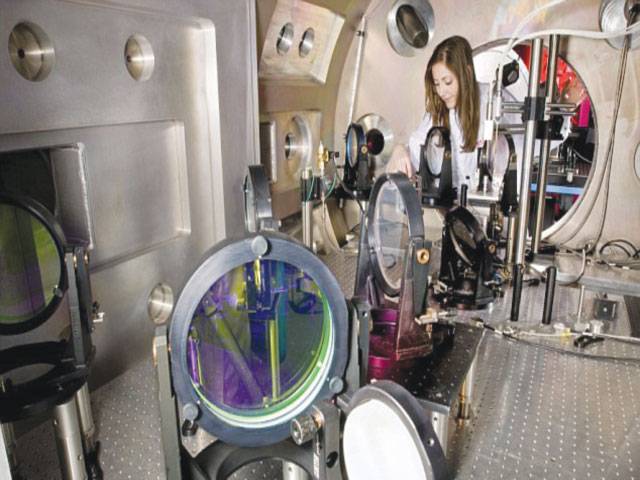MO
London
A team of scientists have recreated a supernova in a laboratory. Using laser beams 60,000 billion times more powerful than a laser pointer, the Oxford University team made scaled supernova explosions on a table-top.
They say this could be used to study supernova explosions in the laboratory, instead of observing them in space.
Supernova explosions, triggered when the fuel within a star reignites or its core collapses, launch a detonation shock wave that sweeps through a few light years of space from the exploding star in just a few hundred years.
They are the among the most energetic events in the universe. But not all such explosions are alike and some, such as Cassiopeia A, show puzzling irregular shapes made of knots and twists.
To investigate what may cause these peculiar shapes the international team led by Oxford University scientists devised a method to study the explosions in the laboratory.
To recreate a supernova explosion in the laboratory the team used the Vulcan laser facility at the UK’s Science and Technology Facilities Council’s Rutherford Appleton Lab.
‘Our team began by focusing three laser beams onto a carbon rod target, not much thicker than a strand of hair, in a low density gas-filled chamber,’ says Jena Meinecke, an Oxford University graduate student, who headed the experimental efforts.
The enormous amount of heat generated by the laser - more than a few million degrees Celsius - caused the rod to explode, creating a blast that expanded out through the low density gas.
In the experiments, the dense gas clumps or gas clouds that surround an exploding star were simulated by introducing a plastic grid to disturb the shock front.
‘The experiment demonstrated that as the blast of the explosion passes through the grid it becomes irregular and turbulent just like the images from Cassiopeia,’ said Professor Gregori.
The results confirmed that supernovas do not always expand uniformly into interstellar material such
‘It may sound surprising that a table-top laboratory experiment that fits inside an average room can be used to study astrophysical objects that are light years across,’ said Professor Gianluca Gregori of Oxford University’s Department of Physics, who led the study published in Nature Physics.
‘In reality, the laws of physics are the same everywhere, and physical processes can be scaled from one to the other in the same way that waves in a bucket are comparable to waves in the ocean. ‘So our experiments can complement observations of events such as the Cassiopeia A supernova explosion.’
The Cassiopeia A supernova explosion was first spotted about 300 years ago in the Cassiopeia constellation 11,000 light years away.
The optical images of the explosion reveal irregular ‘knotty’ features and associated with these are intense radio and X-ray emissions.
Whilst no one is sure what creates these phenomena one possibility is that the blast passes through a region of space that is filled with dense clumps or clouds of gas.
Friday, April 19, 2024
Scientists create a ‘Supernova’ in the lab

Caption: Scientists create a ‘Supernova’ in the lab
Moot notes diabetes, blood pressure on the rise among youth
April 19, 2024
Academicians at moot give insights on global education
April 19, 2024
DIG Operations re-assigns police officers in Islamabad
April 19, 2024
ANF recovers 60kg drugs in 6 operations
April 19, 2024
Accused in child abuse case shot dead by accomplice
April 19, 2024
Hepatitis Challenge
April 18, 2024
IMF Predictions
April 18, 2024
Wheat War
April 18, 2024
Rail Revival
April 17, 2024
Addressing Climate Change
April 17, 2024
Justice denied
April 18, 2024
AI dilemmas unveiled
April 18, 2024
Tax tangle
April 18, 2024
Workforce inequality
April 17, 2024
New partnerships
April 17, 2024
ePaper - Nawaiwaqt
Advertisement
Nawaiwaqt Group | Copyright © 2024





